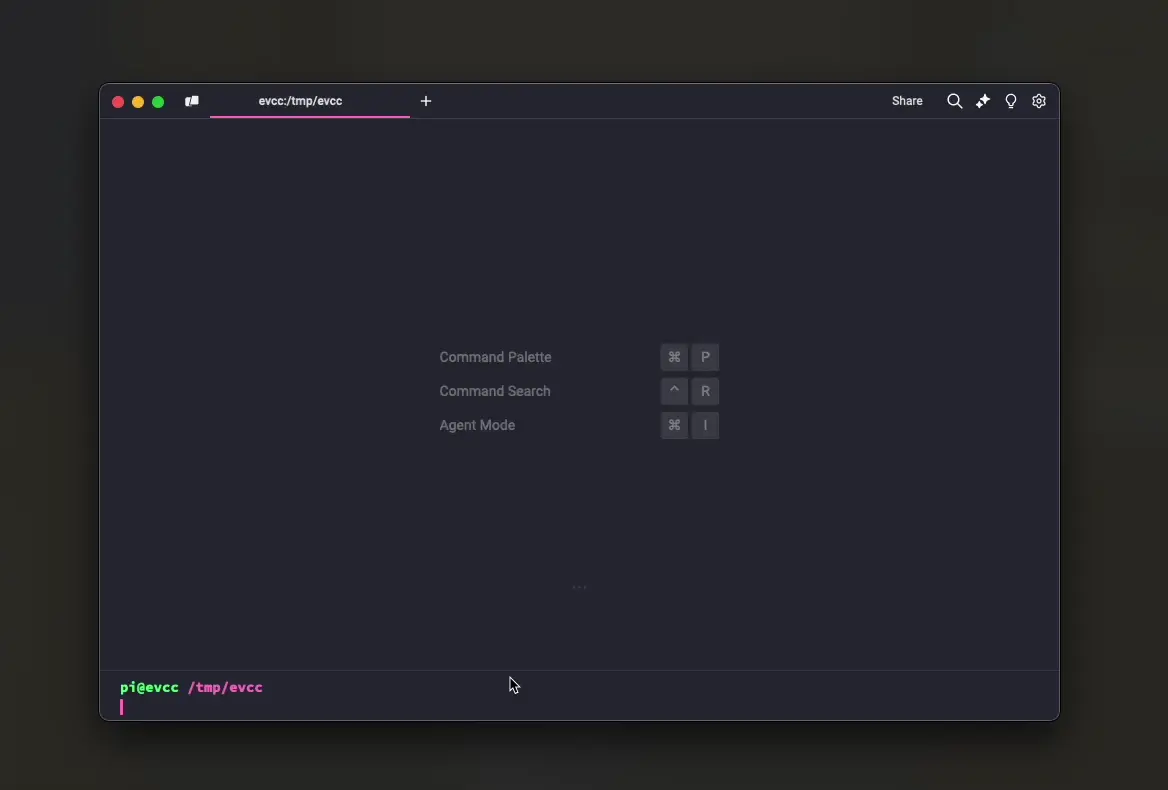Create evcc.yaml
This guide describes how to create a working evcc.yaml file.
With Assistant
Using the evcc configure command, you can create a configuration file through a terminal-based assistant.
You can configure your devices through an interactive question-and-answer dialog.
Prerequisites
To use the assistant, evcc must be installed on your system.
You also need to be able to run the evcc command from the command line (terminal, shell, command prompt).
If evcc is running on a system where you don't have this access (e.g., Home Assistant, Docker), you unfortunately cannot use the assistant.
evcc configure can also be started in a Docker container.
See the explanation in Docker.
Running the Assistant
Start the configuration and follow the prompts in the terminal window:
evcc configure
You should see output similar to the following:

After completing the configuration, an evcc.yaml file will be created in the current directory.
With --advanced you can start the assistant in an advanced mode.
This will give you additional configuration options.
However, this is not necessary for your first configuration.
evcc configure --advanced
Test if the configuration works:
evcc -c evcc.yaml
Open a browser and enter the following URL: http://localhost:7070.
The evcc interface should now show your own devices.
If everything works, you can move your evcc.yaml to the location required for your installation.
Troubleshooting
If errors occur, you can get additional information using the following commands.
-
Syntax check
evcc -c evcc.yaml checkconfig -
Meters (Grid, Solar, Battery)
evcc -c evcc.yaml -l debug meter -
Vehicles
evcc -c evcc.yaml -l debug vehicle -
Wallboxes
evcc -c evcc.yaml -l debug charger
Check the output of each command for plausibility.
You can also run evcc configure again and correct your entries.
Note that the assistant always creates a completely new configuration.
Targeted modification of an existing configuration is not possible.
Use manual configuration for this.
Manual
If the assistant is not available to you, you can create the evcc.yaml file manually.
Here you'll find a minimal template that you can use as a starting point.
Creation
Copy the content into a new evcc.yaml file.
## minimal configuration example
site:
title: Home # display name for UI
meters:
grid: my_grid
pv:
- my_pv
battery:
- my_battery
# define your loadpoints according your needs
# see https://docs.evcc.io/en/docs/reference/configuration/loadpoints
loadpoints:
- title: Garage # display name for UI
charger: my_charger # charger
vehicle: my_car # default vehicle
# meter definitions
# name can be freely chosen and is used as reference when assigning meters to site and loadpoints
# for documentation see https://docs.evcc.io/docs/devices/meters
meters:
# replace with your real grid meter
- name: my_grid
type: template
template: demo-meter
usage: grid
power: -1000 # 1 kW feed-in
# replace with your real solar system
- name: my_pv
type: template
template: demo-meter
usage: pv
power: 4000 # 4 kW production
# replace with your real battery
- name: my_battery
type: template
template: demo-battery
usage: battery
power: -1000 # 1 kW battery charging
soc: 50 # 50 % state of charge
# replace with your real charger
# see https://docs.evcc.io/docs/devices/chargers
chargers:
- name: my_charger
type: template
template: demo-charger
status: C # charging
power: 2000 # 2 kW charging power
enabled: true # optional
# replace with your real vehicle (optional)
# see https://docs.evcc.io/docs/devices/vehicles
vehicles:
- name: my_car
type: template
template: offline
title: blue e-Golf
capacity: 50 # in kWh
# enter your real grid tariff and feed-in price
# see https://docs.evcc.io/docs/tariffs
tariffs:
currency: EUR
grid:
type: fixed
price: 0.29 # EUR/kWh
feedin:
type: fixed
price: 0.10 # EUR/kWh
You can start evcc with this file. Use the respective instructions for your system.
Testing
Restart evcc and open your browser at http://<evcc-ip>:7070.
Check if the values are plausible.
If you receive an error message, check your entries.
Often these are indentation or typing errors. The file is written in YAML format. You can use the online tool YAML Lint to check if your file follows the correct format.
Customizing
The file only contains demo devices (demo-charger, demo-meter, demo-battery, offline).
These have fixed values.
Go through the file step by step and adjust the values to your setup:
- Replace the demo devices with your own meters, wallboxes, and vehicles.
- If you don't have a battery, you can remove that section completely.
- If you have multiple solar systems, you can duplicate the corresponding sections.
- If you have multiple wallboxes, copy the loadpoint and charger sections and adjust the names.
Note that the individual entries reference each other.
In the site entry (meters), the meters (grid, pv, battery) are assigned to their roles.
The name field is always used for this.
Names must therefore be unique.
Make these changes step by step if possible. Restart evcc after each change and check the output in the browser. This way you'll quickly notice if you've made a mistake.
Further Information
The evcc.dist.yaml in the main project contains a complete list of all possible configuration options. More detailed explanations of the options can be found under Reference → evcc.yaml.
If you want to see a dynamic demo, you can also look at the contents of the demo.yaml file. This file contains JavaScript-based demo devices that simulate limited functionality. It is also used for demo.evcc.io.
To run your own installation in demo mode, just start evcc with the parameter --demo.
See CLI Referenz for more information.